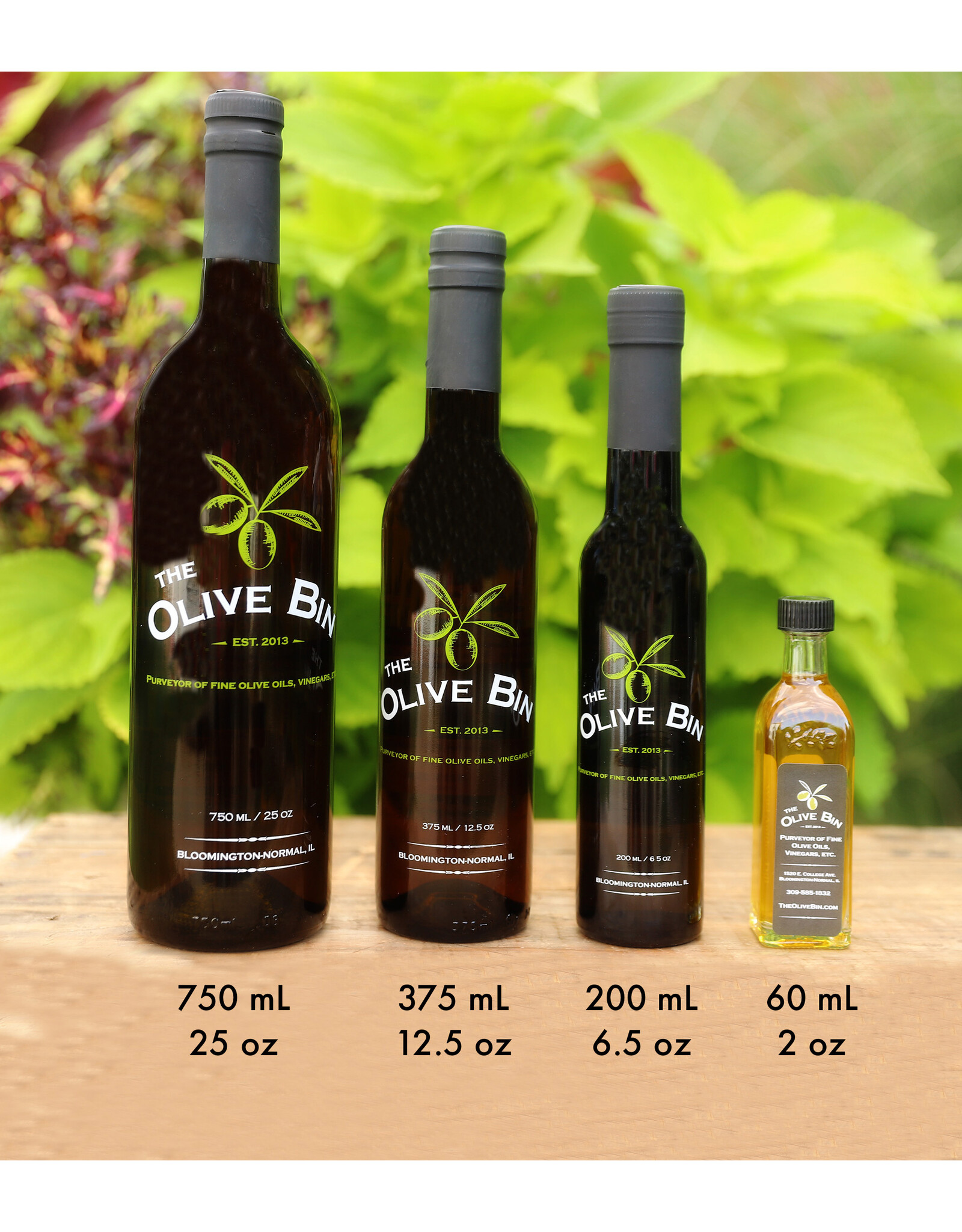EVOO Arbosana (Australia)
| Availability: | In stock |
May 2023 Harvest - Medium Intensity. Our Australian Arbosana is complex with a floral nose, a creamy green almond center, astringency, and lingering pepperiness.
The Olive Bin's EVOO's are first cold-pressed extra virgin olive oil. Olive oils are gluten-free, dairy-free, and Kosher. Olive oil should be used within 12-14 months from when the seal on the bottle is broken. Please read blow and see our Facts and Cooking pages for more information.
COOKING INFORMATION
CHEMICAL COMPOSITION (as measured at time of crush)
| Biophenols: 468.6 ppm | FFA: 0.13 |
| Oleic Acid: 76.6 | Peroxide: 2.6 |
| DAGs: 98 | PPP: <0.2 |
| Squalene: 3,171.9 | A-Tocopherols: 334.8 |
TASTE PANEL ASSESSMENT
Fruitiness 5.5 Bitterness 3.5 Pungency 3.5
CHEMICAL COMPOSITION INFORMATION
Becoming familiar with these four key chemical composition characteristics of olive oil will help enhance your cooking and make choose which olive oil is right for you.
POLYPHENOLS: Polyphenols are a class of antioxidants that determine the level of bitterness and pungency (mild, medium, or robust/bold). The higher the polyphenol level, the healthier the oil. Phenols decrease over time when exposed to heat, oxygen, or light. Consuming fresh olive oil with high polyphenol content is crucial to obtaining health benefits associated with EVOO's.
OLEIC ACID: Oleic acid is a monounsaturated omega-9 fatty acid found in olive oil. Olive oil is generally higher in oleic acid than other vegetable fats. The higher the oleic acid, the better the oil; the higher the nutritional value; and the better the shelf life of the oil.
FFA (Free Fatty Acid): A low FFA is desirable (<0.8%). FFA speaks to the condition of the fruit at the time of crush. A lower FFA content is directly related to a higher smoke point of olive oil. True EVOOs (like The Olive Bin's) have a smoke point right under 400 F.
PEROXIDE VALUE: A very low peroxide value is desirable (<20.0). Free fatty acids react with oxygen and form peroxides, which create a series of reactions responsible for rancidity. These reactions are accelerated by high temperature, light, and oxygen exposure.






